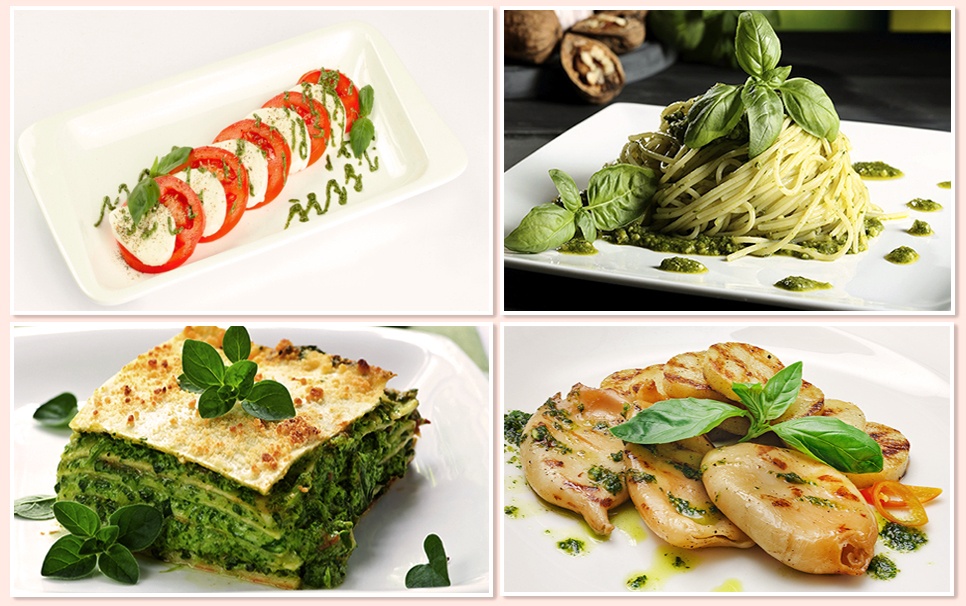Ranking the best pesto sauces for 2022
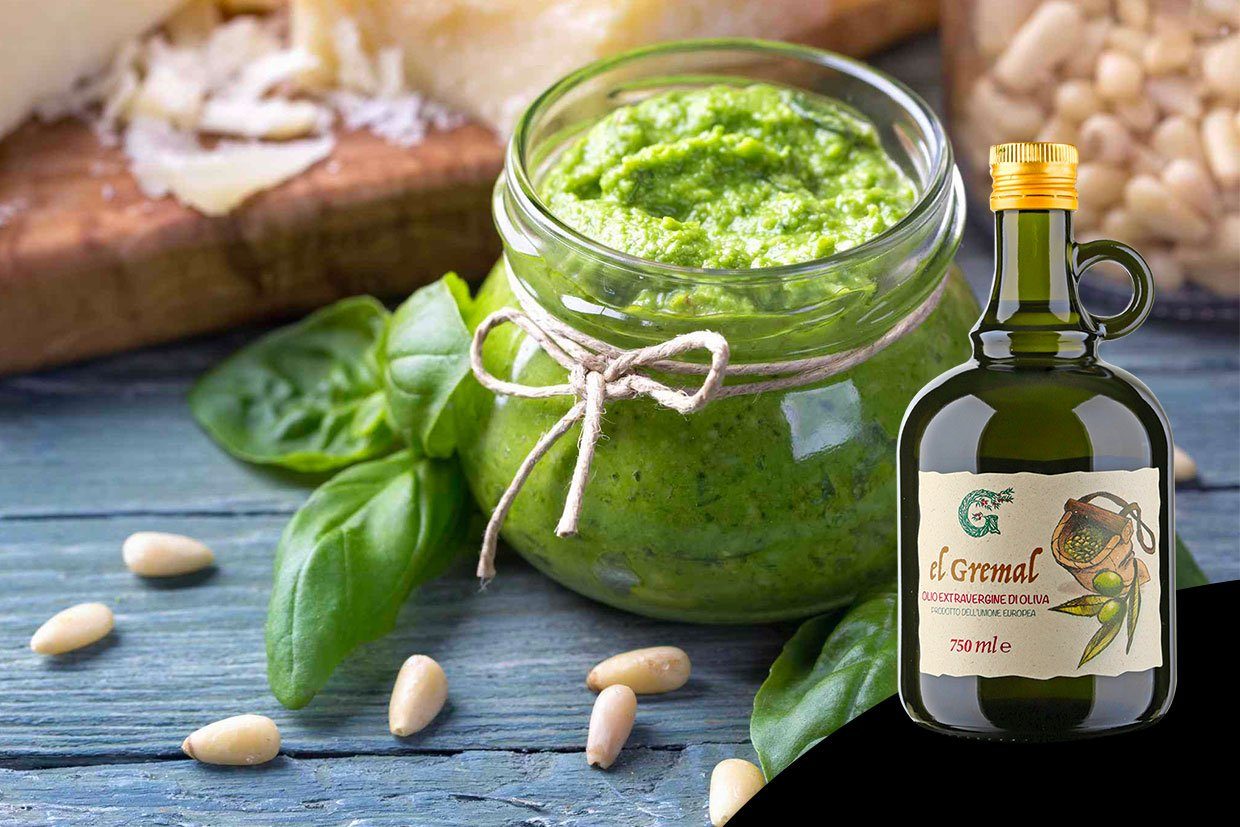
Pesto sauce is the hallmark of Italian cuisine and has the ability to literally transform the taste of various dishes. The main ingredients are hard sheep's cheese, basil and olive oil. It is usually served with pasta, meat, fish or baked goods. A thick pasty product of a specific green color is distinguished by its original aroma due to a bouquet of spices and fragrant herbs.
In stores, customers are offered a huge selection of all kinds of pesto variations from various manufacturers. To participate in the rating, 7 most preferred brands for the Russian consumer, produced by well-established brands, were selected. To determine the best pesto in terms of taste and quality, the characteristics and composition of the product, cost and customer reviews will be compared.
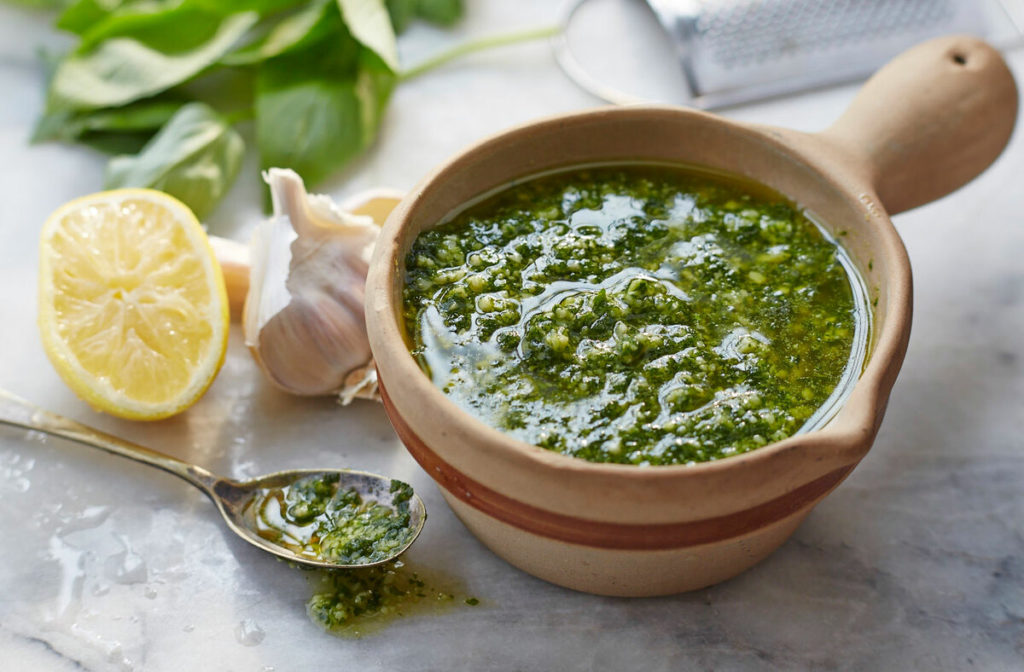
Content [Hide]
What does it consist of
Italians extremely carefully preserve the national traditions of their cuisine. Pesto, which is considered the basic sauce of Italian cuisine and is a classic, demonstrates the clearest example of a reverent attitude and universal love. In the very name of the seasoning lies the method of preparation, since the word pesto is translated from Italian as "rubbing, crushing or trampling."
The basic pesto recipe originated in northern Italy, in Genoa. It consisted of the following ingredients: sheep's hard cheese, basil, pine seeds - Italian pine, garlic, salt and extra virgin olive oil. Now manufacturers often allow deviations from the canonical composition, but pine seeds, which replaced pine nuts, have practically ceased to be used.
To get a real Italian sauce, you must strictly follow the sequence of actions. It is desirable that the seasoning oil be of high quality, of a good grade. As for cheese, the most commonly used are pecorino or parmesan. Now chefs have begun to add green cheeses to pesto, which have a different taste, but give the product a rich aroma and color.
Since pesto was invented by the Italians, who cannot imagine their cuisine without tomatoes, a kind of seasoning was invented using tomatoes. This sauce is very different from the classic, and above all in its color - it has a red color, and not the usual green. Red pesto differs from green pesto in the presence of sun-dried tomatoes needed to make it. Both variations are widely used not only in Italy, but throughout the world.
In its homeland, pesto perfectly complements almost all traditional national dishes.Italians are very fond of the simplest pesto sandwiches on fresh white bread. It is believed that the history of pesto originates from the time of the prosperity of the Roman Empire. Its inhabitants were considered great gourmets, so they tried to constantly come up with new unusual dishes.
If we take into account documentary historical evidence, the first mention of pesto sauce appeared in the second half of the 19th century, since it was during this period that culinary specialists began to be seriously interested in old recipes. Just at that time, other sauces were able to find a new life, for example, currency or the basic version of the French béchamel sauce. The first of those who began to prepare pesto were the inhabitants of the Liguria region in Italy.
Green basil leaves, pine seeds, and garlic cloves were ground in a marble mortar. Then pecorino cheese and olive oil, salt to taste were added to the mass. Over time, pecorino was replaced with parmesan, and expensive pine seeds were replaced with cashews, walnuts or pine nuts. In some European countries, local versions of pesto have appeared. In Germany, for example, wild garlic leaves are used instead of basil, and in Austria, pumpkin seeds are used.
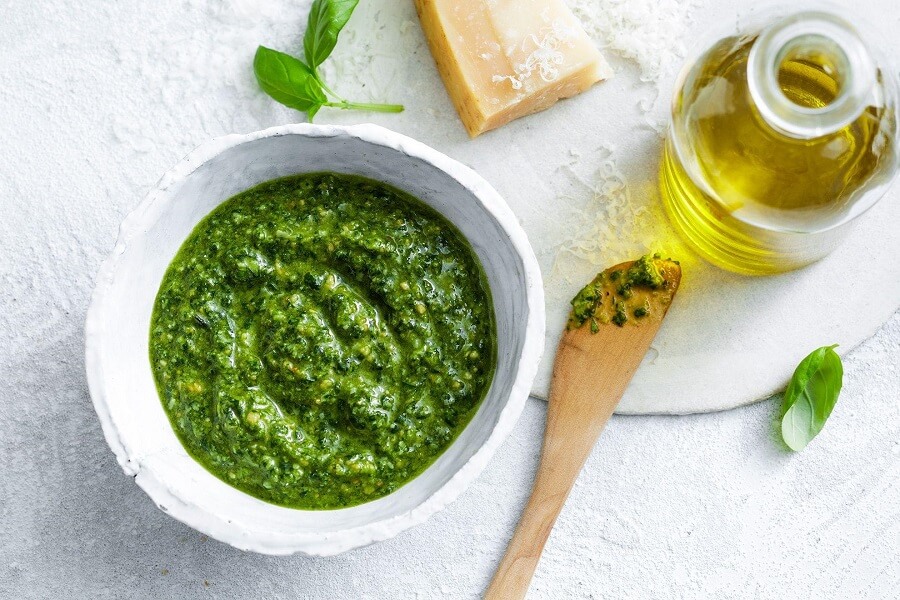
How to choose pesto in the store
When you want to try a sauce as close as possible to the taste of the original or cook any of the traditional Italian dishes, it is advisable to pay attention to a few practical tips:
- It is advisable to opt for an Italian-made product, which contains basic components. In different countries, there are many free interpretations of the seasoning, which is very different from the original Genovese.The Austrian version of pesto uses pumpkin seeds instead of nuts, while the Thai version uses fish sauce and mint.
- Rosso, another variation of pesto, is rich red in color because it uses sun-dried tomatoes and balsamic vinegar. The recipe was developed in the south of Italy and is of Sicilian origin.
- Genoese pesto is usually thick and smooth, with visible bits of basil, cheese, and nuts. To check the density, you need to tilt the jar of the product. The sauce should be pasty in consistency, its fluidity is not allowed.
- Italian products are assigned a special category, indicating that they are located in a particular region, strictly following the traditional recipe, and strict quality control. If the label contains the designations IGT, DOP, IGP, DOC, DOCG, STG, then the product in question belongs to the category of high quality. If a product bears the STG designation (Denominazione di Origine Protetta), this indicates strict adherence to the traditional recipe and more than 30 years of the manufacturer's presence on the market. The abbreviation STG (Specialità Tradizionale Garantita) guarantees strict control in production.
Ranking the best pesto sauce for 2022
The following brands participate in the ranking of the best brands of the product:
- Barilla;
- Dolmio;
- Filippo;
- Monini;
- De Cecco;
- Federici;
- Agnesi.
After analyzing all the main characteristics of products from each of these manufacturers, it will be possible to draw a conclusion about the quality of the presented sauces.
Inexpensive and average cost
Federici
votes 2
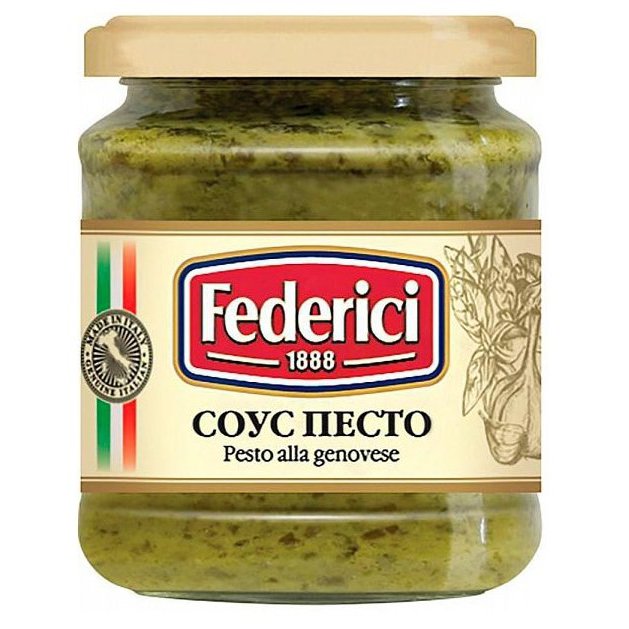
The composition of this masterpiece has a significant difference - sunflower oil. Also included in the recipe: basil, garlic, pine nuts and cheese.Gourmets will appreciate the aroma of Italian cheese. On the surface of the jar, oil leakage is permissible.
Consumers note that the composition is not close to traditional pesto. It's all because of the non-use of olive oil and the addition of cashews. It did not greatly affect the taste, and many appreciated it. Because of the abundance of oil, many people use it when they cook pizza.
The product remains fresh after 24 months from the date of manufacture. The seasoning has a good shelf life after opening - 14 days. Product of Italian origin.
The cost is from 180 rubles.
- not a high price;
- pleasant aroma;
- not very salty.
- subject to delamination.
Dolmio
votes 0
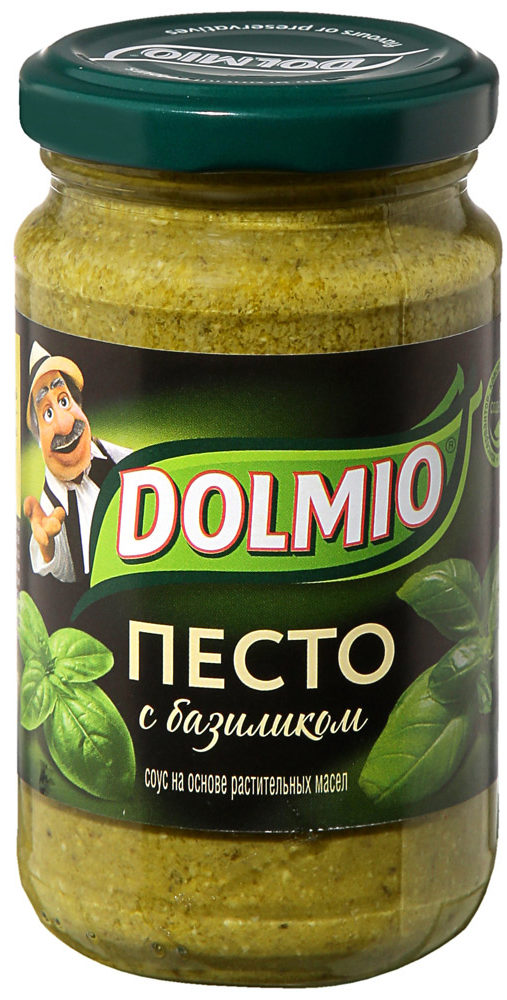
Pesto from the non-traditional category, the components of which are sunflower oil, cashews and potatoes. Also in the recipe there are two types of hard cheese - sheep's Pecorino Romano and Grano Padano from cow's milk. The consistency is airy, enveloping, with visible particles of cheese and a bright garlic aroma.
Pesto from Dolmio will suit any dish, harmoniously complementing it. It can be pasta, a sandwich or regular boiled eggs.
Attention! There is a constant discussion among tasters and culinary experts about the need to add potatoes to pesto. It is often used in small quantities to achieve the desired density. The presence of potatoes does not affect the taste at all.
The product is usable for 2 years. Open sauce should be stored in the refrigerator for no more than 3 days. Produced in Italy.
The cost is from 260 rubles.
- spicy rich taste;
- suitable as an addition to any dish;
- does not give sourness;
- natural composition.
- not found.
Filippo Berio
votes 1
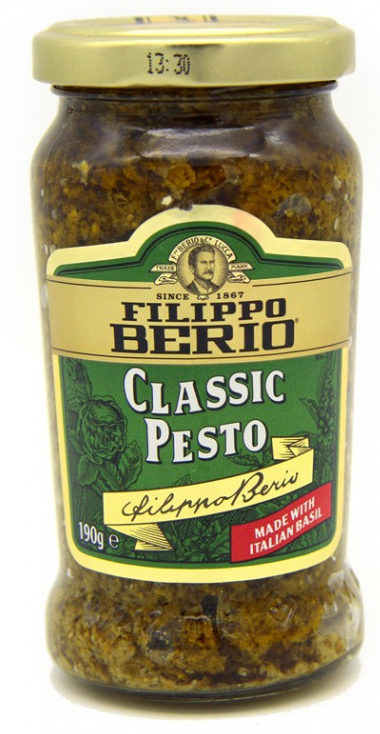
A sauce based on Italian basil, pine nuts, cashew nuts and a mixture of vegetable oils. A slight release of oil is allowed closer to the neck of the glass jar. The composition is very thick. Filippo Berio contains cheeses (cow and sheep). Maybe that's why there is a sour taste. Like many foods, shake well before opening.
Expiry date: 24 months from the date of manufacture. After opening the package, it must be used no later than two weeks. Made in Italy.
The cost is from 250 rubles.
- pronounced aroma;
- rich taste;
- natural composition.
- not detected.
Monini
votes 0
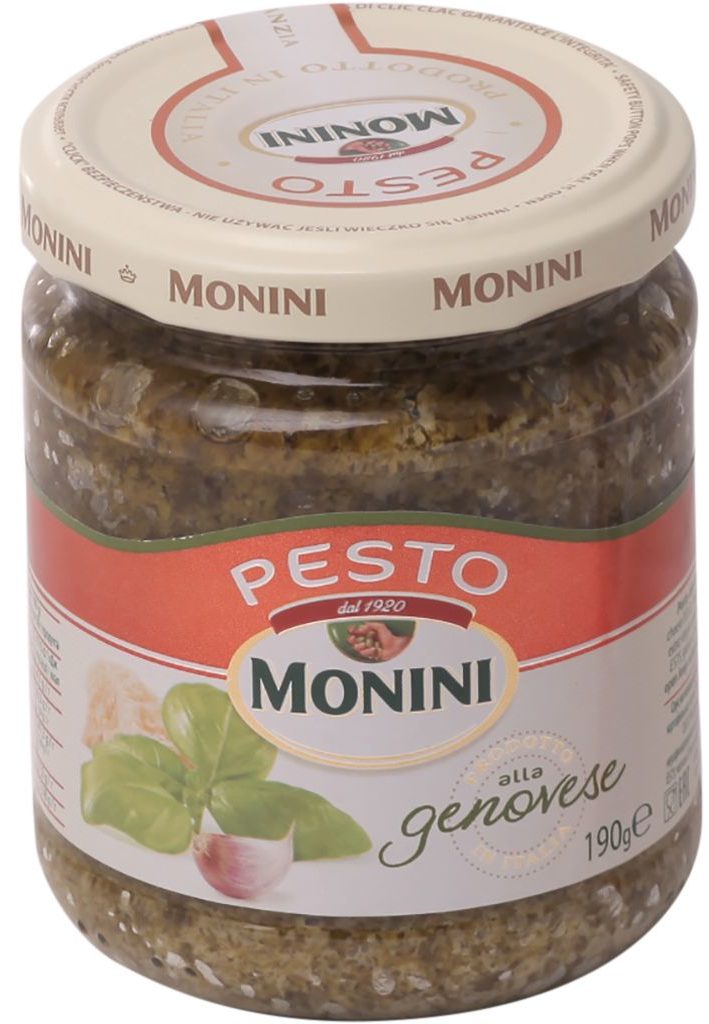
The sauce contains vegetable oils, basil, cashew kernels and pine nuts. There is a small amount of potato flakes. A distinctive feature is the aroma of herbs and the most delicate structure. Low energy value.
The product has a shelf life of 36 months from the date of manufacture. An opened jar will keep in the refrigerator for 3 days. Made in Italy. The cost is from 250 rubles.
- pronounced aroma of basil;
- rich taste;
- the consistency is thick and dense.
- excess oil.
De Cecco
votes 0
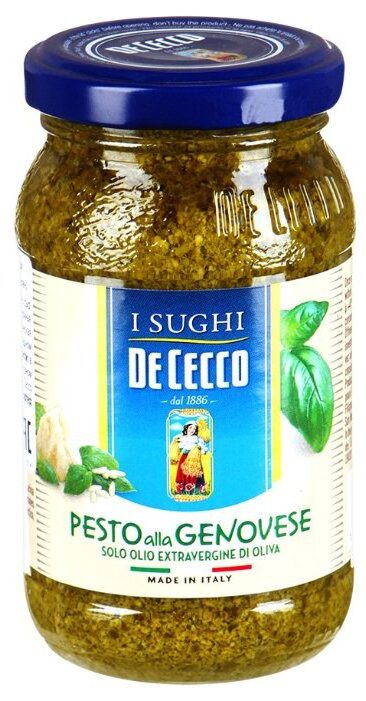
High quality sauce based on unrefined olive oil, basil, various nuts and parmesan, produced in Italy. The recipe is very similar to the traditional one.
De Cecco was created with the participation of the famous German chef Heinz Beck (who is a Michelin award winner).
Amazing aroma and great taste. The piquant component is whole cedar nuts in the composition. In terms of price-quality ratio, the sauce has no equal.
The composition of the sauce most closely resembles an old Italian recipe. The basis of the composition is olive oil, cold pressed. The aforementioned nuts, hard cheese and basil. This sauce has earned a lot of positive customer reviews, and its affordable price beckons you to try the miracle of culinary art.
The maximum shelf life in compliance with the manufacturer's recommendations is 20 months. Once opened, the jar should be stored in the refrigerator for 72 hours. Product of Italian origin.
The cost is from 260 rubles.
- traditional recipe;
- rich aroma of cheese and herbs;
- good value and excellent quality.
- not found.
Expensive and high quality
Barilla Pestialla genovese
votes 4
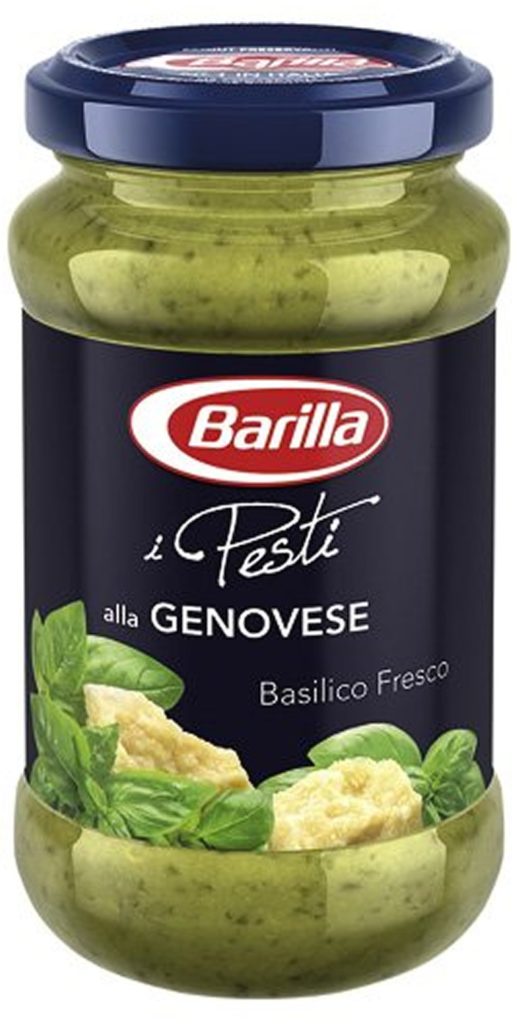
Genovese pesto contains the following ingredients: sunflower oil with olive oil, basil and chopped cashew nuts. The consistency is thick, more like a paste. Does not contain gluten and chemical additives. The taste is rich, spicy, with original notes of sheep's Pecorino Romano cheese and Italian spices.
The product from Barilla is not considered traditional, because in its preparation pine nuts were replaced with cashews, and sunflower oil was used instead of olive oil. However, Russian consumers are happy to buy this particular sauce, preferring it to others.
Users note that the sauce goes well with many products, from a simple baguette and fresh tomatoes to complex meat or fish dishes. The great advantage of Barilla pesto is the excellent composition without the use of chemical additives or potato starch. Also, users drew attention to the correct density and the absence of sediment.
Shelf life in unopened packaging is 2.5 years. It is advisable to store the opened package in the refrigerator and no more than 5 days. This product is made in Italy.
The cost is 320 rubles.
- completely natural product;
- rich rich taste;
- piquant shades of cheese and spices;
- thick, paste-like consistency.
- not found.
Agnesi
votes 0
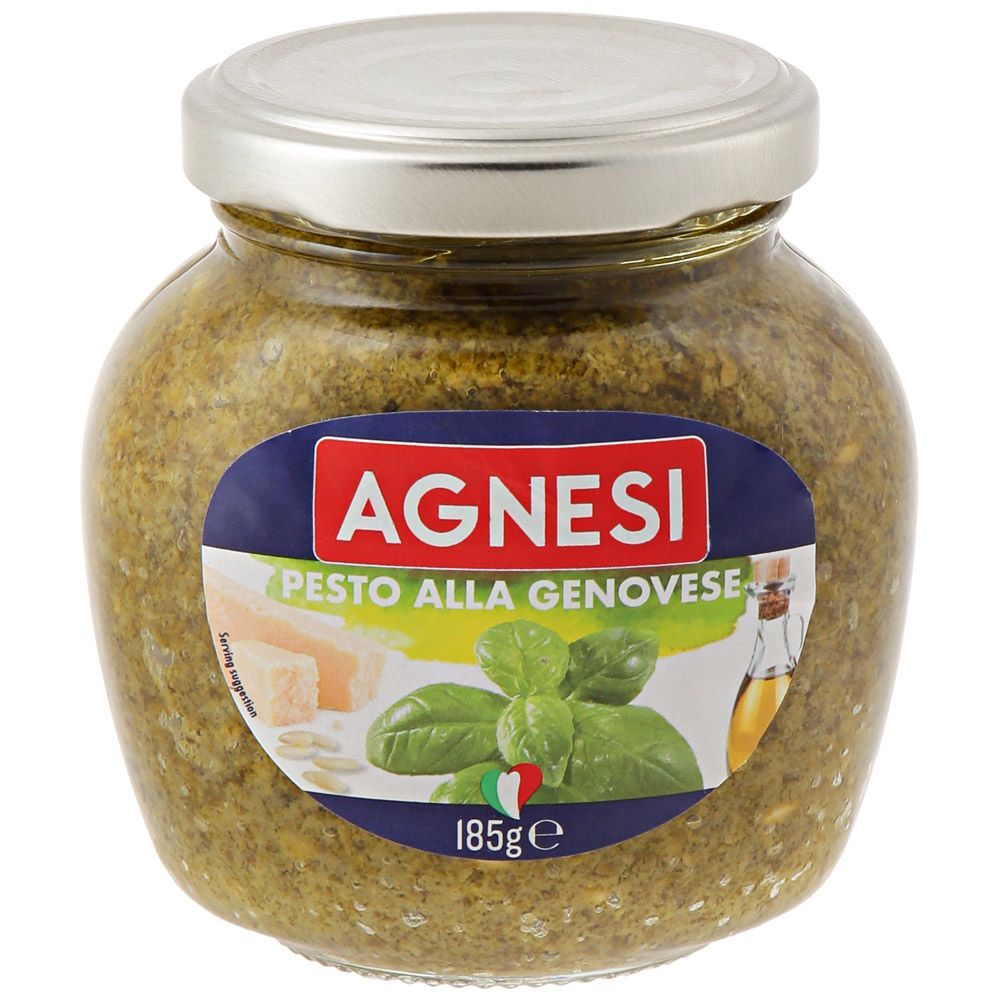
The sauce is created using traditional recipes. Ingredients: olive oil, a mixture of cheeses and basil. One of the features is the use of cow and sheep cheese. The consistency is the most correct, thick.
The traditional sauce, based on the classic recipe, has undergone some changes over time. Although the manufacturer promises to achieve the necessary consistency in the traditional way when creating pesto “in Genoese”. A mortar made of marble and a pestle made of wood are used.
Budget Agnesi pesto can hardly be called. In this rating, it is the most expensive sauce. But, in this case, excellent quality justifies the high price. The only thing that alerted buyers a little was the presence of potato flakes. However, the presence of such a component does not reduce the taste value.
According to customer reviews, if consumed immediately after opening, the taste is amazing. No large amount of separated oil was found.
Consumer properties are preserved for 20 months from the date of production. Once opened, the jar should be stored in the refrigerator for 72 hours. Product of Italian origin.
The cost is from 329 rubles.
- nice smell;
- based on olive oil;
- memorable taste;
- natural composition.
- not found.
What dishes goes well with
Sauces go well with almost all Mediterranean dishes. For example, noodles can take on an absolutely wonderful taste, and a standard cracker can become a gourmet snack if you add pesto.
What else are sauces good for? Classic pesto goes great with poultry, sandwich or rolls. All this, thanks to the composition based on olive oil and fragrant basil.
Another sauce with sun-dried tomatoes will perfectly complement pasta products. Pairs well with red fish and lime slices on a bun.
On a French baguette, sauce with tomatoes and ricotta looks great. Perfect for vegetable dishes. Jacket potatoes make a good company of pesto with tomatoes.
“Pesto with olives according to the traditional Ligurian recipe” goes well with both pasta and legumes.
If someone lacks spiciness, then red pepper sauce is the best solution. Some housewives use a spoonful of this pesto to add an Italian touch to soups. Not a standard solution may be to use spicy pesto as a filling in rolls.
The inhabitants of the Apennine peninsula love pesto so much that they have dedicated a whole extraordinary festival to it, the purpose of which is to prepare it. This championship is held in Genoa every year. You need to prepare the seasoning in the same way as it was prepared many years ago in a marble mortar.
new entries
Categories
Useful
Popular Articles
-

Top ranking of the best and cheapest scooters up to 50cc in 2022
Views: 131649 -

Rating of the best soundproofing materials for an apartment in 2022
Views: 127687 -

Rating of cheap analogues of expensive medicines for flu and colds for 2022
Views: 124516 -

The best men's sneakers in 2022
Views: 124030 -

The Best Complex Vitamins in 2022
Views: 121937 -

Top ranking of the best smartwatches 2022 - price-quality ratio
Views: 114978 -

The best paint for gray hair - top rating 2022
Views: 113393 -

Ranking of the best wood paints for interior work in 2022
Views: 110317 -

Rating of the best spinning reels in 2022
Views: 105326 -

Ranking of the best sex dolls for men for 2022
Views: 104362 -

Ranking of the best action cameras from China in 2022
Views: 102214 -

The most effective calcium preparations for adults and children in 2022
Views: 102010
